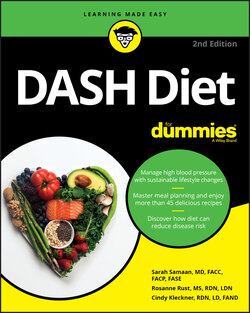Читать книгу DASH Diet For Dummies - Sarah Samaan - Страница 33
Analyzing the results
ОглавлениеThe results of the DASH study were conclusive: A reduced-fat diet rich in low-fat dairy, along with plenty of fruits and vegetables, can lower blood pressure substantially. Compared with the control diet, the fruits-and-vegetables diet dropped systolic pressure 2.8 points and diastolic 1.1 points. That doesn’t sound very impressive, but it’s meaningful in terms of stroke and heart disease risk reduction. The DASH diet was more powerful, lowering systolic pressure by 5.5 points and diastolic by 3 points.
More important, in those people diagnosed with hypertension at the beginning of the study, blood pressure fell by an average of 11.4 points systolic and 5.5 points diastolic, which is on par with the results you would expect from medical therapy. The improvement happened quickly, with results seen within two weeks on the diet, and improvement was seen across race and gender. Speaking of gender, DASH was actually somewhat more effective in women over the age of 45 compared to men. (Other studies focusing on salt restriction have also found that women do at least as well as their male counterparts over the long term, substantially reducing their risk for stroke and heart disease.)
Some people may worry that a plant-heavy diet could cause intestinal upset, but the DASH researchers found the opposite. In fact, constipation was reported in 10 percent of those on the typical Western-style control diet but in only 4 percent of those on DASH.
Overall, the researchers estimated that the drop in blood pressure seen by simply following the DASH diet had the power to reduce heart disease by 15 percent and cut the incidence of stroke by 27 percent. That’s a lot of lives saved and misery prevented.
